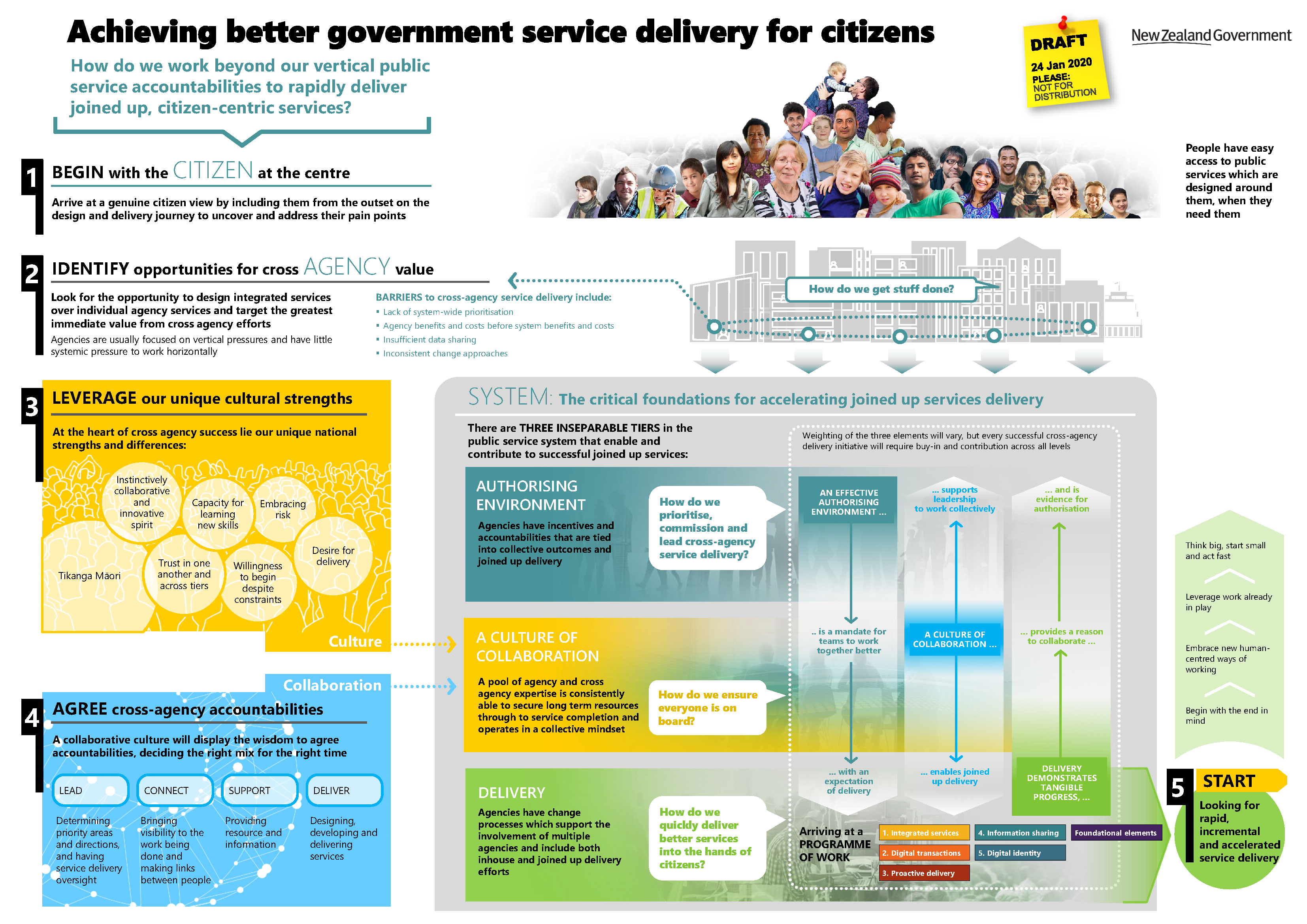Accelerating joined-up services delivery through collaboration
The opportunity
Questions about how we work beyond our vertical public service accountabilities to rapidly deliver joined up, citizen-centric services was central to shaping the Service Innovation Lab’s approach. It prompts questions about:
- How do we prioritise, commission and lead cross-agency service delivery?
- How do we ensure everyone is on board?
- How do we quickly deliver better services into the hands of citizens?
Three pillars guided the teams focus in response. Weighting of the three elements will vary, but every successful cross agency delivery initiative will require buy-in and contribution across all levels.
1. Authorising environment
This spans people and groups who can provide the authority, resources and mandate for the work to happen. Involvement is typically at a governance level. People here are often several steps away from the work. Bridging that gap is a key consideration. People in the authorising environment have a crucial role creating the conditions for cross-agency working, keeping the focus on delivery and demonstrating leadership by ensuring effective new ideas are implemented and sustained.
2. Creating a culture of collaboration
That is exists is essential for joined up working. Needs to be present at all levels of work for effective cross-agency working. Time and effort here is just as important as the work itself. In some instances this might be ‘the work’ especially where the technical capability to delivery is in place. It is strongly relational and trust based. It may need new skills, structures, processes and routines created to grow and sustain collaborative mindsets and practice.
3. Focusing on delivery
Creating value and contributing to better outcomes for people who access and use services is one key way a team or lab can demonstrate its effectiveness. It requires both a short and long term perspective. Design led and Agile development practice are combined to focus on working quickly to prototype and test minimum viable products (MVPs). Working openly and ‘showing not telling’ helps people to see and be part of the work. Making work visible to sponsors and decision makers especially where it is underpinned by strong collaborative practice generates support within the authorising environment.
Quick health check questions to ask about your project
Authorising environment
- What is the level of maturity of the authorising environment for commissioning cross-agency working?
- If not, what would it take to build or shape it?
- What are the characteristics of an effective authorising environment for your work?
- What are the risks of proceeding with work where a mandate doesn’t exist?
- Are decision-makers committed to providing resources for current work and implementation
- How will you keep commissioners engaged in the work and supportive of a focus on collaboration and delivery?
Culture of collaboration
- Is everyone who needs to be involved on board with the work?
- How will you know if a culture of collaboration is not present? What symptoms will you look for?
- How will you create shared purpose, intent, culture and a space to work across the team?
- How are you create a collaborative approach that brings together people working in policy, operation and implementation
Delivery
- How can you demonstrate delivery and value in a way that provides a reason for further collaboration and support from your authorising environment?
- How will you know if work on development and delivery is not on track? What symptoms will you look for to help guide how you respond?
- How will you balance demonstrating value and progress while also creating space for deep work?
- When does delivery stop for your team? Who will take over, how will they be involved early and how will implementation be resourced?
- How can you create opportunities for people in the authorising environment to experience the work and engage with users/citizens?


